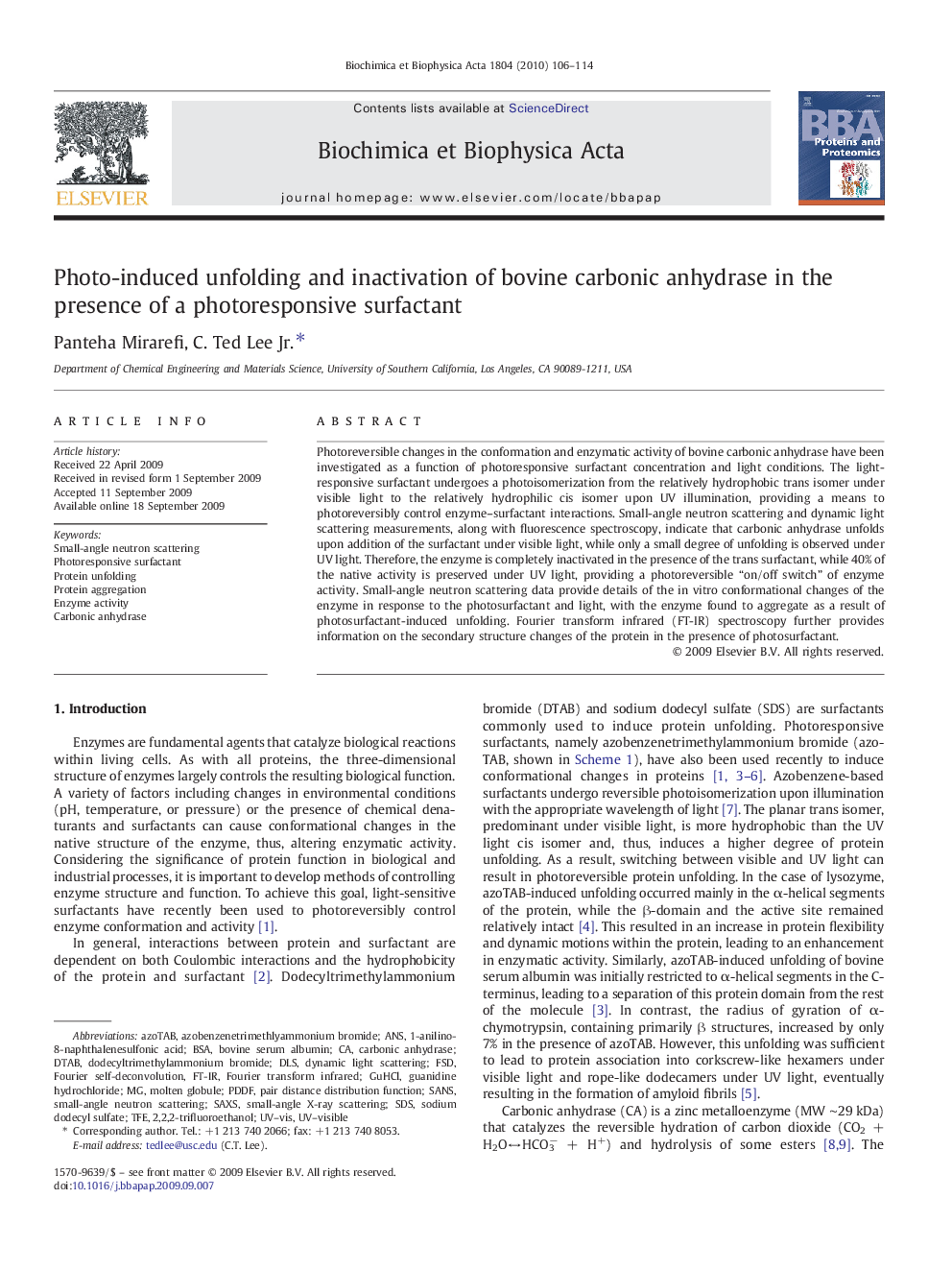| Article ID | Journal | Published Year | Pages | File Type |
|---|---|---|---|---|
| 10536966 | Biochimica et Biophysica Acta (BBA) - Proteins and Proteomics | 2010 | 9 Pages |
Abstract
Photoreversible changes in the conformation and enzymatic activity of bovine carbonic anhydrase have been investigated as a function of photoresponsive surfactant concentration and light conditions. The light-responsive surfactant undergoes a photoisomerization from the relatively hydrophobic trans isomer under visible light to the relatively hydrophilic cis isomer upon UV illumination, providing a means to photoreversibly control enzyme-surfactant interactions. Small-angle neutron scattering and dynamic light scattering measurements, along with fluorescence spectroscopy, indicate that carbonic anhydrase unfolds upon addition of the surfactant under visible light, while only a small degree of unfolding is observed under UV light. Therefore, the enzyme is completely inactivated in the presence of the trans surfactant, while 40% of the native activity is preserved under UV light, providing a photoreversible “on/off switch” of enzyme activity. Small-angle neutron scattering data provide details of the in vitro conformational changes of the enzyme in response to the photosurfactant and light, with the enzyme found to aggregate as a result of photosurfactant-induced unfolding. Fourier transform infrared (FT-IR) spectroscopy further provides information on the secondary structure changes of the protein in the presence of photosurfactant.
Keywords
Related Topics
Physical Sciences and Engineering
Chemistry
Analytical Chemistry
Authors
Panteha Mirarefi, C. Ted Jr.,
